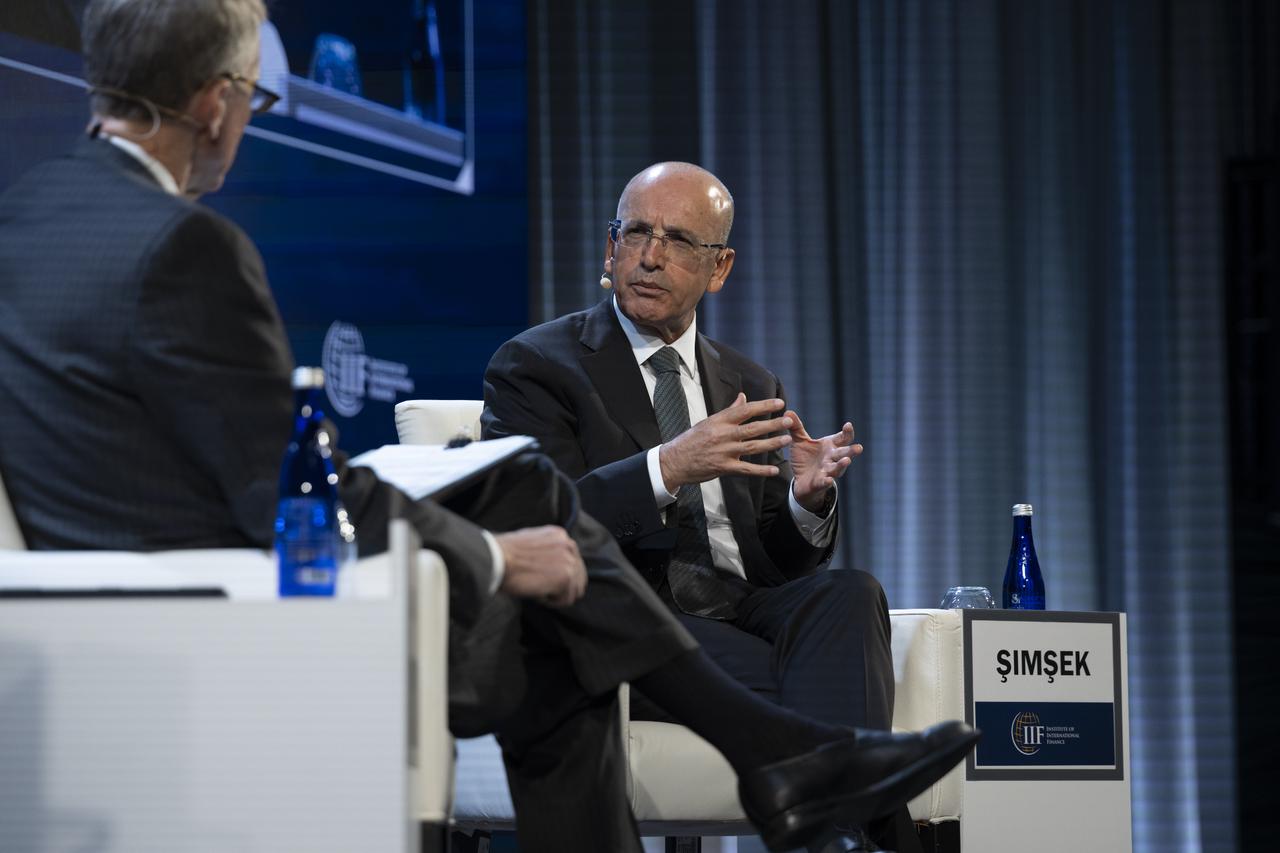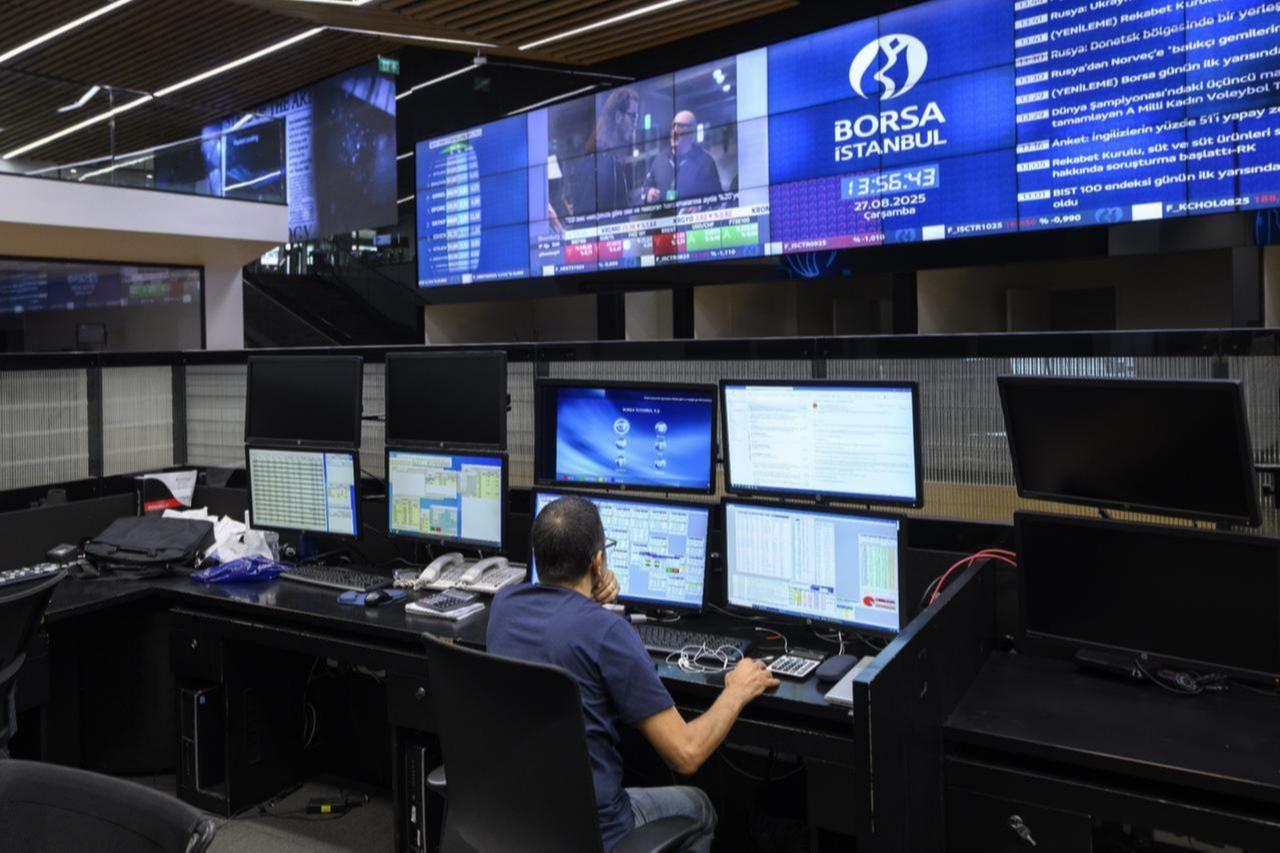
Turkish Finance Minister Mehmet Simsek said Friday that Türkiye expects inflation to decline “to the 10% range by the end of 2026 and to single digits the following year,” signaling confidence in the government’s ongoing disinflation program.
Speaking at the Institute of International Finance (IIF) Annual Membership Meeting in Washington, Simsek said the government’s policy framework is “delivering results,” with inflation and fiscal indicators showing steady improvement.
“We have a program, and it’s delivering results,” Simsek said. “Inflation is falling. We will likely close the year at around 30%. Last year it was 44%, and the year before that about 65%. We expect inflation to decline to the 10% range by the end of next year and to single digits the year after.”
Despite roughly $90 billion spent on post-earthquake reconstruction, Simsek said fiscal discipline remains intact, with the budget deficit down to 3.5% of gross domestic product (GDP) from about 5% previously. Türkiye’s debt-to-GDP ratio stands at around 25%, which Simsek called “quite low for an emerging market.”

Simsek said the external deficit, historically a weak point for the Turkish economy, had narrowed sharply. “The deficit was 0.8% of GDP last year, and excluding gold, we actually had a surplus,” he said. “This year the deficit will remain modest, around 1.4%, again showing a surplus when gold is excluded.”
He credited the improvement to rising domestic oil and gas production, a slowdown in growth, and a structural shift toward sustainability. Growth, he noted, averaged 3.3% over the past two years, below the long-term average of 5.5%.
“If we maintain structural transformation, we will return to a more sustainable, high-growth path,” Simsek said, adding that external debt-to-GDP has fallen from over 50% to 36%, while the gross external financing requirement declined to 16%–17%.

Despite short-term inflationary pressure from drought and frost, Simsek said these were temporary shocks. “Even if this year’s numbers exceed our forecast, we can live with that. We’ll stay the course,” he said.
“With generally supportive oil prices, all indicators are positively aligned for further disinflation. I see no reason for concern.”
Simsek said Türkiye simplified macroprudential rules to improve monetary policy transmission. “When we started this program, the market-to-book ratio of banks was around 0.4. Today, it’s above 1. The worst is behind us,” he said.
“As macro indicators improve, macro-financial stability will solidify. Everyone will benefit from structural transformation—citizens and companies alike.”
Simsek highlighted Türkiye’s young and educated workforce, noting that about 930,000 university and 430,000 vocational graduates join the labor force annually. Women’s labor participation, at 37%, remains well below the OECD average of 67%, but Simsek said reforms on childcare and flexible work would help bridge that gap.
On regional dynamics, Simsek said Türkiye’s geographic position gives it “enormous potential” if regional peace efforts succeed. “If more peace and stability come to the region, Türkiye will benefit greatly,” he said, pointing to reconstruction opportunities in Ukraine, Libya, and Syria.
He also praised the growth of Türkiye’s defense industry, saying it had evolved “from one of the largest importers in the 1990s to among the world’s top 10–11 exporters today.”
“Türkiye can help Europe close its defense and industrial gaps,” Simsek said. “The market may not yet be pricing in these advantages.”